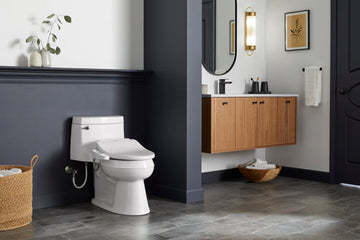Bathroom design is undergoing a significant transformation, marking the onset of a revolution in innovative toilet bowl shapes. These designs go beyond mere aesthetics; they are geared towards improved functionality, enhanced hygiene, and an extraordinary experience in our private spaces. As the industry leans towards more sustainable and user-centric solutions, it is essential for industry QA professionals to comprehend the implications of these advancements on product quality and performance.
The market currently boasts a plethora of toilet designs that aim to redefine our bathroom experiences. Whether they are eco-conscious options or designs focusing on comfort and hygiene, the variety available is staggering. What makes these innovative shapes beneficial for consumers and manufacturers alike? Lets delve deeper into the realm of modern toilet designs and assess their potential impacts.

The Importance of Shape in Toilet Design
The shape of a toilet bowl is more than just a visual element. It plays a crucial role in its functionality and the overall user experience. For example, elongated bowls are generally favored for comfort, while round models are appreciated for their space-saving features. Yet, the spectrum of shapes now extends further than traditional options.
Some modern bowls now incorporate asymmetrical designs, enhancing water flow and flushing effectiveness. Such innovations not only conserve water but also minimize clogging, which is vital information for both consumers and industry QA professionals. This marks a progressive leap towards creating eco-friendly toilets aligned with sustainable development goals.
Materials and Technology in Modern Toilets
Breakthrough materials and technologies are pivotal in reimagining toilet bowl shapes. Manufacturers are exploring materials that are both bacteria-resistant and easier to maintain, addressing hygiene and upkeep concerns effectively. Features like self-cleaning coatings and antimicrobial surfaces are becoming increasingly prevalent, offering users a superior hygienic experience.
Furthermore, the fusion of smart technology is another thrilling development. Toilets equipped with sensors and automated functions can adjust water consumption based on user needs, optimizing the bathroom experience further. Insights on this topic can be found in articles such as The Future of Toilet Technology, which discusses how these advancements are reshaping the industry.
Consumer Preferences and Trends
There is a noticeable shift in consumer preferences towards smart toilets that feature distinct shapes and functionalities. Customers are increasingly attracted to products that blend aesthetic appeal with practical utility. Consequently, manufacturers are focused on creating designs that not only captivate visually but also elevate user comfort and convenience.
For instance, the global popularity of Japanese-style bidet toilets can be attributed to their multifunctional design and ergonomic features. These toilets provide a thorough cleaning experience and often include enhancements like heated seats and adjustable water pressure for user comfort. Such trends signify a growing appetite for personalized bathroom experiences. Explore more about the environmental benefits of bidets here.
The Role of Industry QA in Bathroom Innovations
The rise of innovative toilet bowl shapes presents significant challenges and opportunities for Industry QA professionals. Ensuring that these new designs meet quality benchmarks and perform consistently is vital. This requires thorough testing of materials, flushing systems, and the durability of the products.
QA pros must remain informed about emerging technological trends and consumer preferences to provide valuable insights into product development. By doing so, they can assist manufacturers in creating offerings that not only comply with regulatory standards but also surpass consumer expectations. For a deeper understanding of technological influences in the bathroom industry, check out The Future of Bathroom Technology.
Challenges and Considerations
Despite the many advantages, the rollout of these new toilet designs is not without hurdles. Cost presents a significant challenge, as innovative designs and technologies often come with a steeper price. However, as these advancements gain traction, it is anticipated that costs will decline, making them more accessible to a wider audience.
Equally important is the environmental footprint of manufacturing new toilets. Though many designs aim for sustainability, the production processes must also resonate with environmental goals. Striking a balance between innovation and sustainability represents a key challenge for both manufacturers and QA professionals.
Conclusion: Embracing the Future of Bathroom Design
The transformation of toilet bowl shapes marks an exciting new chapter in the bathroom industry. These innovations have the potential to elevate user experience, bolster hygiene, and advance sustainability. For Industry QA professionals, staying attuned to these developments is crucial to assuring product quality and effectiveness.
As we continue to adapt to these changes, it is essential to remain updated on the latest advancements. Resources like The Rise of the High-Tech Toilet provide valuable insights into the future of bathroom technology, guiding industry professionals and consumers through this evolving terrain.

FAQ Section
What are the benefits of innovative toilet bowl shapes?
Innovative toilet bowl shapes deliver numerous advantages, such as enhanced water efficiency, increased comfort, and improved hygiene. They also contribute to a more visually appealing bathroom environment.
How do smart toilets improve user experience?
Smart toilets typically feature automated flushing, heated seats, and bidet functions, which enrich user comfort and convenience. They also provide superior water management and hygiene solutions.
Are innovative toilet designs environmentally friendly?
Many cutting-edge toilet designs focus on sustainability by minimizing water consumption and using eco-friendly materials. However, the environmental implications of their manufacturing processes should also be evaluated.
This article contains affiliate links. We may earn a commission at no extra cost to you.






